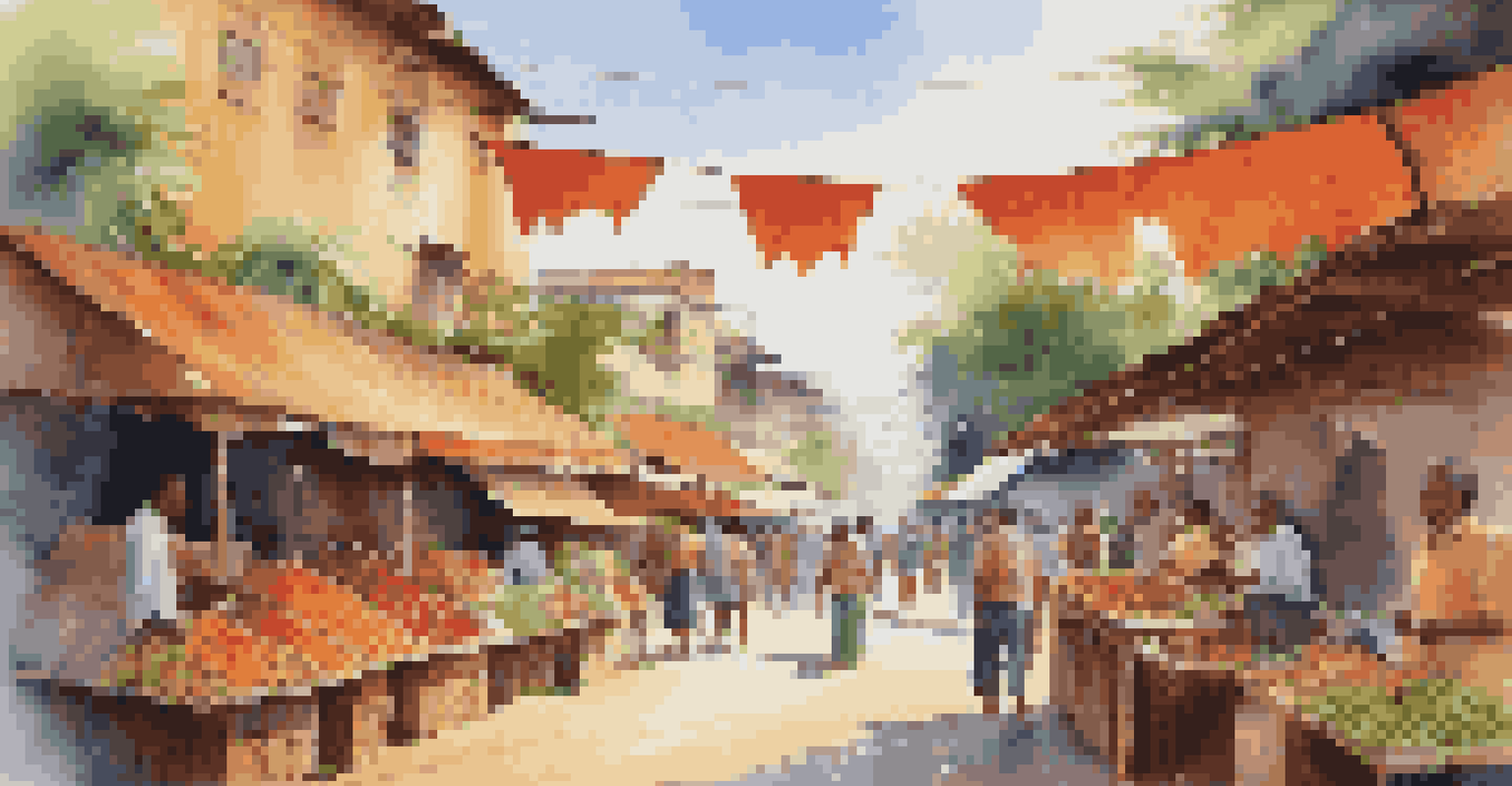Understanding Travel Restrictions During Natural Disasters

What Are Travel Restrictions During Disasters?
Travel restrictions during natural disasters are measures put in place to ensure the safety of travelers. These can include bans on entering or leaving certain areas, curfews, and warnings against travel. The primary goal is to protect both residents and visitors from potential dangers, such as flooding, fires, or severe weather conditions.
In the midst of chaos, there is also opportunity.
For instance, during a hurricane, local authorities may impose evacuation orders, preventing anyone from entering the affected regions. This also applies to areas that could be impacted by aftereffects, like landslides or power outages. Understanding these restrictions can help travelers make informed decisions.
It's essential to stay updated with local news and government advisories to grasp the full scope of these restrictions. Ignoring them can lead to dangerous situations, not only for individuals but also for emergency responders who may have to assist those who are stranded.
Types of Travel Restrictions You Might Encounter
Travel restrictions can vary widely based on the type and severity of a natural disaster. For example, during wildfires, road closures might prevent access to certain areas, while hurricanes often lead to mandatory evacuations. Understanding these distinctions helps travelers navigate their options.

In some cases, airlines may cancel or delay flights due to unsafe conditions, which can add layers of complexity to travel plans. Additionally, some regions might impose quarantine measures for travelers arriving from affected areas to prevent the spread of hazards like disease or contamination.
Travel Restrictions Ensure Safety
During natural disasters, travel restrictions like evacuations and curfews are implemented to protect both locals and visitors.
Being aware of the different types of restrictions is crucial for any traveler. It can save time, money, and potentially one's safety. Always check with local authorities or travel agencies for the most current information before making any travel arrangements.
How to Stay Informed About Restrictions
Staying informed is key to managing travel during natural disasters. Regularly check government websites, local news, and social media for updates on travel advisories. Many countries have dedicated emergency management agencies that provide real-time information regarding natural disasters and associated travel restrictions.
The best way to predict the future is to create it.
Apps and websites like the National Weather Service or FEMA can also offer timely alerts. It’s wise to subscribe to notifications on your phone for immediate updates, especially when you’re traveling in areas prone to disasters.
Moreover, speaking with locals or hotel staff can provide insights into the current situation. They often have firsthand knowledge of conditions and can guide you on the safest routes and practices during emergencies.
Understanding Emergency Protocols for Travelers
In the event of a natural disaster, travelers should familiarize themselves with emergency protocols. This includes knowing evacuation routes, shelter locations, and how to contact local authorities. Most tourist destinations provide this information, so it’s a good idea to ask upon arrival.
Preparedness also means having an emergency kit, including essentials like water, food, and a first aid kit. Having these items ready can make a significant difference during a crisis, especially if you find yourself stranded.
Stay Informed for Safe Travel
Regularly checking government updates and local news is essential for travelers to stay informed about ongoing travel restrictions.
Additionally, knowing how to communicate with family or friends can alleviate stress during emergencies. Establishing a plan for how to reach out during a disaster can help keep everyone informed and safe.
The Role of Insurance During Travel Disruptions
Travel insurance can be a lifesaver when natural disasters disrupt travel plans. Policies often cover trip cancellations, medical emergencies, and additional accommodations due to unexpected events. It's essential to read the fine print to understand what is and isn't covered.
For example, if a hurricane forces you to cancel your flight, travel insurance can reimburse your costs. However, not all policies cover natural disasters, so it’s crucial to choose one that does. Always ask your insurance provider about their specific policies regarding natural disasters.
In a world where unpredictable events are becoming more common, having insurance can provide peace of mind. It allows travelers to focus on safety rather than financial loss during these stressful situations.
Tips for Safe Travel During Natural Disasters
When traveling during potential natural disasters, safety should always come first. Keep your travel plans flexible, allowing for last-minute changes if necessary. Avoid traveling to areas under severe weather warnings or known for high disaster risks during certain seasons.
Always have a backup plan in case your primary plans fall through. This could mean knowing alternative routes or having a list of nearby accommodations. Being prepared for unexpected changes can minimize stress and ensure safety.
Travel Insurance Provides Peace of Mind
Having travel insurance can protect against financial losses due to trip cancellations caused by natural disasters.
Finally, trust your instincts. If a situation feels unsafe or overwhelming, it’s okay to postpone or change your travel plans. Safety should always be your top priority, no matter the adventure ahead.
Post-Disaster Travel Considerations
Traveling to areas affected by natural disasters requires a different approach once the immediate danger has passed. While some regions may be safe to visit again, they may still be dealing with the aftermath. This can include infrastructure damage, ongoing recovery efforts, and limited services.
Before planning a trip back to a disaster-affected area, check for the latest updates on recovery efforts and any remaining restrictions. Local tourism boards often provide information on which attractions and facilities are available.

Additionally, consider the impact of your visit on the local community. Supporting local businesses during recovery can be a positive way to contribute to the area’s rebuilding efforts. However, be mindful of the challenges locals may still be facing as they recover from the disaster.